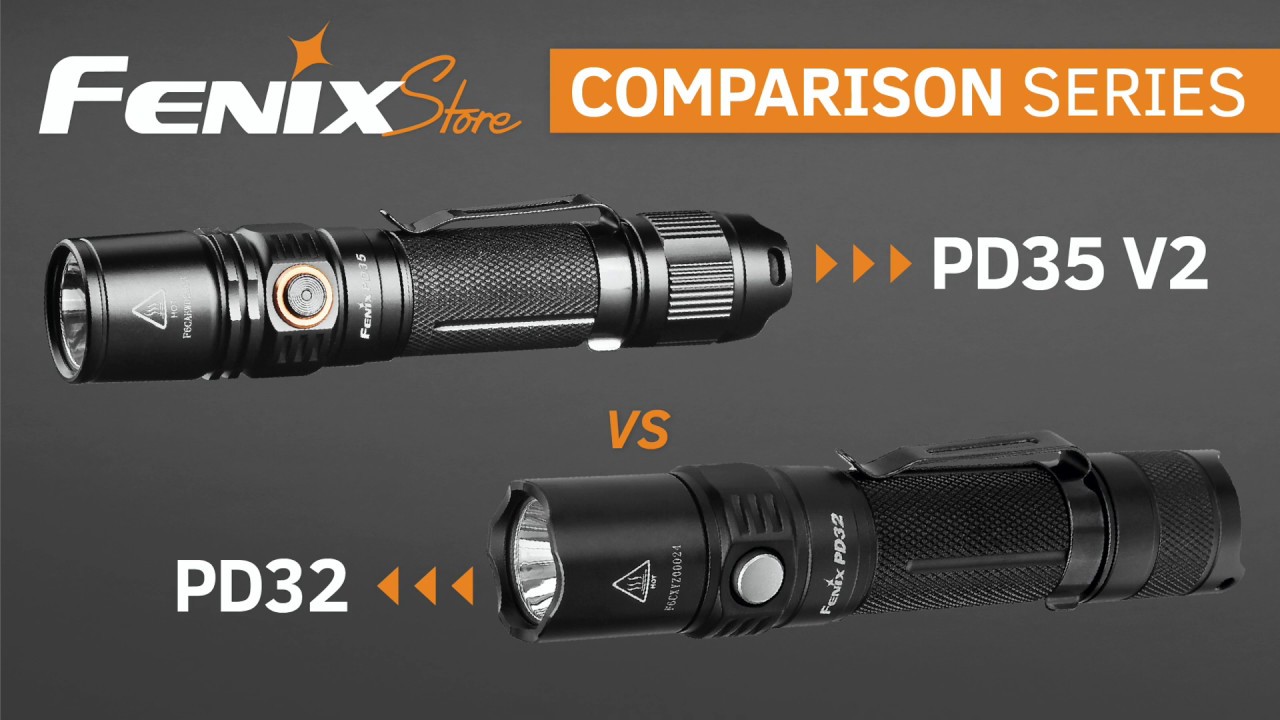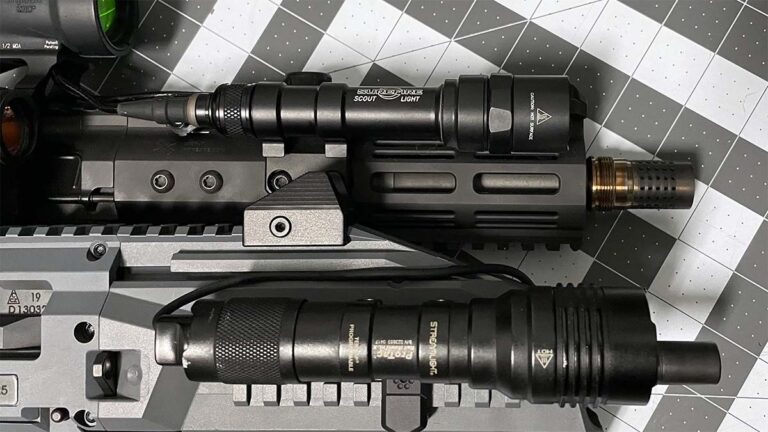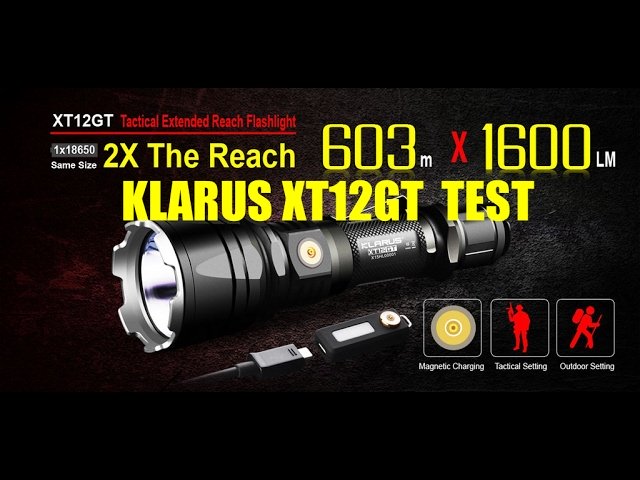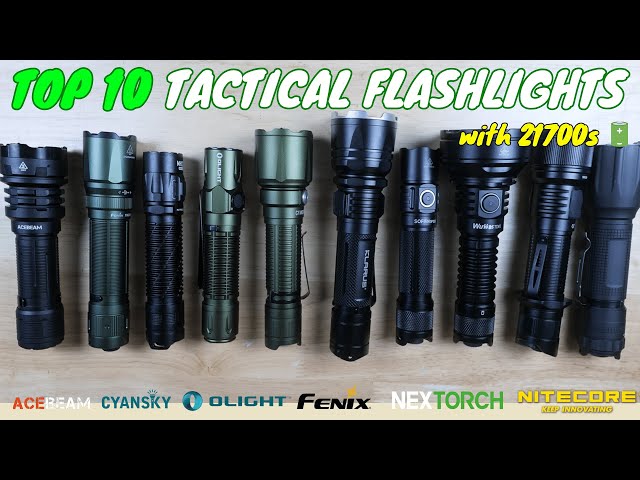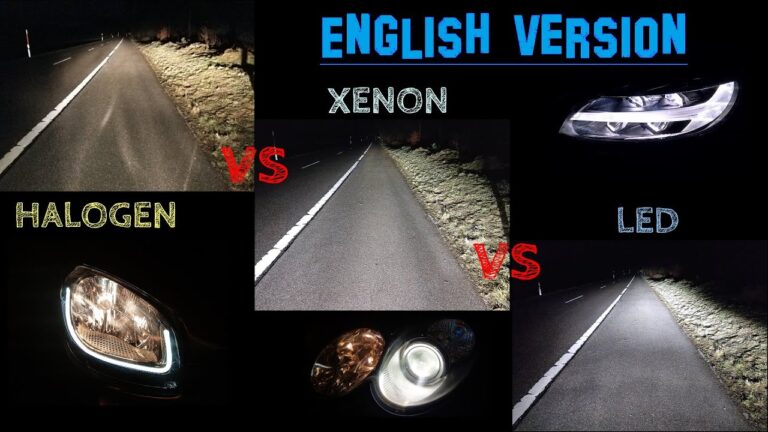Fenix PD32 vs PD35: Ultimate Flashlight Comparison
In the world of high-quality flashlights, Fenix has established itself as a leading brand, offering powerful, reliable, and versatile options for various applications. This article will delve into a detailed comparison between two of Fenix’s popular models: the PD32 and the PD35.
Both flashlights cater to outdoor enthusiasts, emergency responders, and everyday carry users, but they each have unique features that may appeal to different users. We will explore the specifications, performance, and practical use cases of both models, helping you determine which flashlight best suits your needs.
Table of Contents
- Overview of Fenix Flashlights
- Specifications Comparison
- Performance in Real-World Conditions
- User Experience and Design
- Battery Life and Maintenance
- Pricing and Availability
- Pros and Cons of Each Model
- Conclusion and Recommendation
- FAQ Section
Overview of Fenix Flashlights
Fenix Lighting Limited, established in 2004, has built a reputation for creating innovative and high-performance flashlights. The brand’s commitment to quality and functionality has garnered a loyal customer base among outdoor enthusiasts, professionals, and everyday users.
Fenix flashlights are designed with advanced technology, ensuring durability, efficiency, and usability in various conditions.
Brand History
Fenix began its journey in 2004, focusing on providing high-quality lighting solutions. It quickly gained recognition in the flashlight industry for its innovative designs and reliable products.
Over the years, the brand has expanded its offerings, introducing a wide range of flashlights suited for different needs, including tactical, outdoor, and everyday carry options.
Product Range
Fenix’s product range includes several series, such as E, PD, TK, and UC, catering to different user needs. The PD series, which includes the PD32 and PD35, is particularly popular for its balance of power and portability, making it ideal for a variety of applications, from camping to tactical use.
What Makes Fenix Special
Fenix flashlights are known for their durability, as many models are made from aircraft-grade aluminum and are rated for impact resistance and water resistance (IPX-8 standard). Additionally, the brand incorporates advanced LED technologies, offering high lumen outputs and efficient battery management systems, ensuring that users have a reliable light source when needed.
| Year | Milestone |
|---|---|
| 2004 | Fenix Lighting Limited is established. |
| 2006 | Launch of the first Fenix flashlight with a brightness of 200 lumens. |
| 2010 | Introduction of the first rechargeable Fenix flashlight. |
| 2018 | Release of the PD35 V2.0, enhancing features and performance. |
| 2021 | Launch of the PD35 V3.0 with improved LED technology and increased lumen output. |
This table showcases the significant milestones in Fenix’s history, illustrating the brand’s commitment to innovation and quality in the flashlight market. The evolution from basic models to advanced flashlights with higher lumen outputs and new technologies reflects Fenix’s responsiveness to the needs of its customers.
Each new iteration, such as the PD35 V3.0, demonstrates the brand’s focus on enhancing user experience and product reliability.
Specifications Comparison
| Specification | Fenix PD32 | Fenix PD35 |
|---|---|---|
| Max Lumens | 1200 | 1700 |
| Beam Distance | 395 meters | 357 meters |
| Battery Type | 2 CR123A or 1 18650 | 2 CR123A or 1 18650 |
| Weight | 82 grams | 87 grams |
The specifications table provides a clear side-by-side comparison of the Fenix PD32 and PD35 flashlights. Notably, the PD35 outshines the PD32 in terms of maximum lumens, reaching 1700 lumens compared to the PD32’s 1200 lumens.
This increase in brightness can significantly impact visibility in dark conditions, making the PD35 a better option for users requiring maximum light output.
However, the PD32 boasts a longer beam distance of 395 meters compared to the PD35’s 357 meters. This detail is critical for users who need to illuminate areas from a distance, such as in outdoor activities or search and rescue operations.
Both models share the same battery compatibility, allowing users flexibility in power sources, but the PD35 is slightly heavier, which may influence portability for some users.
Lumens and Brightness Levels
The Fenix PD32 provides brightness levels ranging from 5 to 1200 lumens, making it versatile for various tasks. In contrast, the PD35 offers a broader range of brightness modes, including an impressive turbo mode, which peaks at 1700 lumens.
This flexibility allows users to select the appropriate brightness for their specific needs, whether it’s for close-up tasks or long-distance illumination.
Beam Distance and Focus
The beam distance is an essential factor for flashlight performance. The PD32’s beam can reach up to 395 meters, providing excellent throw for outdoor applications.
In comparison, the PD35’s 357 meters is still impressive but slightly less suitable for long-range visibility. Users who prioritize beam distance may find the PD32 more favorable, while those seeking maximum brightness may prefer the PD35.
Battery Compatibility
Both the PD32 and PD35 can operate using two CR123A lithium batteries or a single 18650 rechargeable battery. This compatibility offers users options based on their preferences and availability of batteries.
However, the PD35’s turbo mode requires an 18650 battery for optimal performance, which may be a consideration for users who prefer rechargeable solutions.
| Mode | Fenix PD32 | Fenix PD35 |
|---|---|---|
| Eco (5 lumens) | 260 hours | 100 hours |
| Low (50 lumens) | 10 hours | 12 hours |
| Medium (150 lumens) | 6 hours | 8 hours |
| High (400 lumens) | 2 hours | 2.5 hours |
| Turbo (1200/1700 lumens) | 1.5 hours | 1 hour |
This performance ratings table outlines the runtimes for each brightness mode for both flashlights. The PD32 excels in its Eco mode, boasting an impressive runtime of 260 hours, which is ideal for extended use in low-light situations.
Conversely, the PD35, while offering shorter runtimes in Eco and Low modes, compensates with higher outputs in Turbo and High modes. The differences in runtime highlight the necessity for users to assess their typical usage patterns and select the model that best fits their needs.
Performance in Real-World Conditions
Both the Fenix PD32 and PD35 have been tested in various real-world scenarios, showcasing their capabilities across outdoor activities, tactical applications, and everyday carry (EDC) use. Understanding how each flashlight performs in practical situations is vital for potential buyers.
Outdoor Use
In outdoor settings, both flashlights performed exceptionally well. The PD32, with its extended beam distance, proved advantageous for activities like hiking and camping, allowing users to scan vast areas effectively.
Users have reported that the PD32’s brightness levels are more than adequate for nighttime navigation and setting up camp in dim conditions.
On the other hand, the PD35, with its higher lumen output, excels in situations where immediate and intense light is necessary, such as during search and rescue operations. Its turbo mode can illuminate large areas, making it a preferred choice for emergencies.
However, users need to be cautious of heat buildup during prolonged use in turbo mode, as it can become uncomfortable to hold.
Tactical Applications
For tactical users, the PD35 provides features that cater specifically to law enforcement and self-defense scenarios. The ability to switch between multiple brightness settings quickly is a significant advantage.
The tactical strobe function can disorient potential threats, providing an upper hand during critical situations.
The PD32, while not explicitly designed for tactical use, still performs admirably. It has a tactical tail switch that allows for momentary activation, which can be useful in high-pressure environments.
However, it lacks the dedicated tactical features of the PD35, which may limit its effectiveness in certain scenarios.
Everyday Carry (EDC)
For everyday carry, both models are compact enough to fit comfortably in pockets or bags. The PD32’s lighter weight makes it an attractive option for users who prioritize portability.
However, the PD35 offers additional features that may justify its slightly heavier design, especially for users who frequently require higher brightness levels.
| Scenario | Fenix PD32 Rating | Fenix PD35 Rating |
|---|---|---|
| Outdoor Activities | Excellent | Very Good |
| Tactical Use | Good | Excellent |
| Everyday Carry | Excellent | Good |
This performance ratings table summarizes user feedback on both flashlights in various scenarios. The PD32 received high marks for outdoor activities and EDC, while the PD35 excelled in tactical use.
This information can guide users in selecting the flashlight that aligns with their primary use case, ensuring satisfaction with their purchase.
User Experience and Design
The design and user experience of a flashlight can significantly influence its effectiveness and usability. Both the Fenix PD32 and PD35 have been developed with user-friendly features, but there are distinct differences that may impact user preference.
Build Quality
Both models are constructed from durable aircraft-grade aluminum, ensuring resilience against drops and impacts. The PD35 is slightly heavier due to additional features, but users have noted that both flashlights feel solid and well-made.
The finish is hard-anodized, offering resistance to scratches and corrosion.
Switch Mechanics
Each flashlight features a different switch layout, which can affect user interaction. The PD32 has a tactical tail switch for momentary activation, while the PD35 incorporates a side switch for adjusting brightness levels.
Users have found the tail switch on the PD32 to be intuitive for quick access, whereas the PD35’s side switch allows for more versatile mode switching.
Portability
Portability is a key consideration for everyday carry users. The PD32’s lighter weight makes it easier to carry for extended periods, while the PD35, although slightly heavier, offers more powerful output capabilities.
Both flashlights come with pocket clips, enhancing their portability and ease of access.
| Design Element | Fenix PD32 | Fenix PD35 |
|---|---|---|
| Weight | 82 grams | 87 grams |
| Switch Type | Tail switch | Side switch |
| Clip Design | Secure | Secure |
This user feedback table highlights key design elements and their respective ratings for both flashlights. While the PD32 is favored for its lighter weight and intuitive switch design, the PD35 is appreciated for its ease of mode switching and overall robust features.
Understanding these design aspects can help users select the flashlight that best fits their individual preferences and usage scenarios.
Battery Life and Maintenance
Battery life is a crucial factor when selecting a flashlight, as it directly impacts usability and performance. Both the Fenix PD32 and PD35 utilize similar battery configurations but differ in their power management and runtime capabilities.
Rechargeable vs. Non-Rechargeable
Both models can be powered by two CR123A batteries or a single 18650 lithium-ion battery. However, the PD35’s turbo mode is only available when using the 18650 battery, highlighting the importance of battery selection for achieving maximum performance.
Users who prefer rechargeable options will find the 18650 battery to be a more sustainable choice.
Battery Care Tips
To prolong battery life, users should avoid exposing batteries to extreme temperatures and should store them in a cool, dry place. Regularly checking battery levels and replacing them before they are depleted can also help maintain flashlight performance.
For rechargeable batteries, it’s advisable to avoid deep discharging, as this can affect their lifespan.
Battery Replacement
Replacing the batteries in both models is straightforward. Users simply need to unscrew the tail cap, remove the old batteries, and insert new ones, ensuring that they are oriented correctly.
The PD32 and PD35 both come with user manuals that outline proper battery installation and maintenance procedures, making the process user-friendly.
| Mode | Fenix PD32 Runtime | Fenix PD35 Runtime |
|---|---|---|
| Eco | 260 hours | 100 hours |
| Low | 10 hours | 12 hours |
| Medium | 6 hours | 8 hours |
| High | 2 hours | 2.5 hours |
| Turbo | 1.5 hours | 1 hour |
This battery life table illustrates the runtime differences between the two flashlights across various modes. The PD32 excels in Eco mode, providing an impressive 260 hours of battery life, which is ideal for extended tasks in low-light conditions.
Conversely, the PD35 offers shorter runtimes but compensates with higher brightness levels. Users will need to weigh their needs against the battery performance of each model to make an informed choice.
Pricing and Availability
When considering a flashlight, understanding the price range and availability is crucial. The Fenix PD32 and PD35 are competitively priced, but there are differences that may influence purchasing decisions.
Price Comparison
The Fenix PD32 typically retails for around $59.95, making it an accessible option for users seeking a reliable flashlight without breaking the bank. The PD35, on the other hand, is priced at approximately $79.95.
This price difference can be justified by the PD35’s higher lumen output and additional features, making it a favorable choice for professionals and serious outdoor enthusiasts.
Where to Buy
Both models are widely available through various retailers, including outdoor gear stores, online marketplaces, and the official Fenix website. Users can also find promotional discounts or bundle deals during seasonal sales, making it an excellent opportunity to purchase these flashlights at a reduced price.
Warranty Information
Fenix offers a limited lifetime warranty on its products, which covers defects in materials and workmanship. Customers are encouraged to register their products on the Fenix website to extend the warranty period.
This warranty assurance can provide peace of mind, knowing that Fenix stands behind the quality of its flashlights.
| Model | MSRP | Warranty |
|---|---|---|
| Fenix PD32 | $59.95 | Limited Lifetime |
| Fenix PD35 | $79.95 | Limited Lifetime |
The pricing table illustrates the MSRP for both models and highlights the warranty offered by Fenix. While the PD32 presents a budget-friendly option, the PD35’s enhanced features justify its higher price point for users needing maximum performance.
The limited lifetime warranty further enhances the value proposition, ensuring that customers can trust in their purchase.
Pros and Cons of Each Model
Fenix PD32 Pros and Cons
- Pros:
- Compact and lightweight design.
- Long runtime in Eco mode (260 hours).
- Excellent for outdoor use with a beam distance of 395 meters.
- Cons:
- Lower lumen output compared to PD35 (1200 lumens).
- No turbo mode for maximum brightness.
- Compact and lightweight design.
- Long runtime in Eco mode (260 hours).
- Excellent for outdoor use with a beam distance of 395 meters.
- Lower lumen output compared to PD35 (1200 lumens).
- No turbo mode for maximum brightness.
Fenix PD35 Pros and Cons
- Pros:
- High lumen output (1700 lumens) for intense brightness.
- Versatile brightness modes, including tactical strobe.
- Durable build quality and waterproof rating (IP68).
- Cons:
- Heavier than the PD32 (87 grams).
- Shorter runtime in Eco mode (100 hours).
- High lumen output (1700 lumens) for intense brightness.
- Versatile brightness modes, including tactical strobe.
- Durable build quality and waterproof rating (IP68).
- Heavier than the PD32 (87 grams).
- Shorter runtime in Eco mode (100 hours).
Conclusion and Recommendation
Both the Fenix PD32 and PD35 offer remarkable features and performance for their respective audiences. The PD32 is a reliable choice for users seeking a powerful yet compact flashlight, while the PD35 shines with its higher lumen output and versatility across various settings.
By understanding the specific strengths and usage scenarios for each model, potential buyers can make an informed decision and select the flashlight that best fits their needs.
Best for Outdoor Enthusiasts
The Fenix PD32 is ideal for outdoor enthusiasts who value a lightweight and long-lasting flashlight. Its beam distance and impressive Eco mode runtime make it suitable for camping and hiking.
Best for Tactical Use
The Fenix PD35 is better suited for tactical applications, offering a greater lumen output and features that enhance its utility in emergency situations. Its strobe mode and higher brightness capabilities make it a reliable option for professionals.
Best for Everyday Carry
For everyday carry users, both models have their merits, but the PD32 may be favored for its portability, while the PD35 is recommended for users who often require higher brightness levels.
FAQ Section
What is the main difference in lumens between the Fenix PD32 and PD35?
The main difference in lumens between the Fenix PD32 and PD35 is that the PD32 has a maximum output of 1200 lumens, while the PD35 boasts a higher maximum output of 1700 lumens. This increase in brightness can significantly impact visibility in low-light conditions, making the PD35 more suitable for tasks requiring intense illumination.
How do the beam distances of the PD32 and PD35 compare?
The Fenix PD32 has a beam distance of 395 meters, which is longer than the Fenix PD35’s beam distance of 357 meters. This difference makes the PD32 better suited for applications where extended visibility is essential, such as hiking or search operations.
However, both flashlights provide excellent throw for their respective sizes.
Which model is better for everyday carry?
For everyday carry, the Fenix PD32 may be preferable due to its lighter weight of 82 grams compared to the PD35’s 87 grams. The PD32’s compact design and extended runtime in lower modes make it an excellent choice for users who prioritize portability and long-lasting performance.
Are both flashlights waterproof?
Yes, both the Fenix PD32 and PD35 are rated at IP68 for waterproofing, allowing them to be submerged in water up to 2 meters for 30 minutes. This rating makes both models suitable for outdoor use in various weather conditions, ensuring reliability when you need it most.
How do you maintain the battery life of Fenix flashlights?
To maintain the battery life of Fenix flashlights, users should avoid exposing batteries to extreme temperatures, store them in a cool and dry environment, and regularly check battery levels. For rechargeable batteries, it is essential not to deep discharge them, as this can affect their lifespan.
Keeping the battery contacts clean and following the manufacturer’s guidelines for charging can also prolong battery life.

